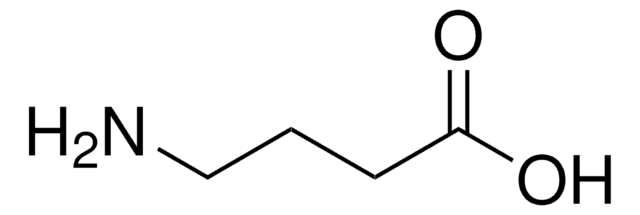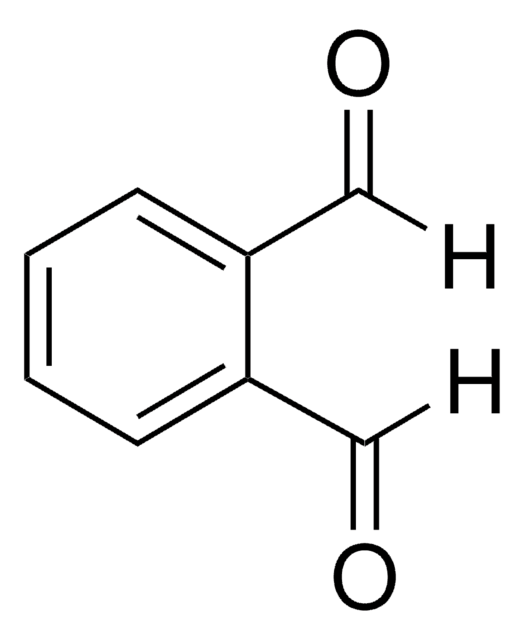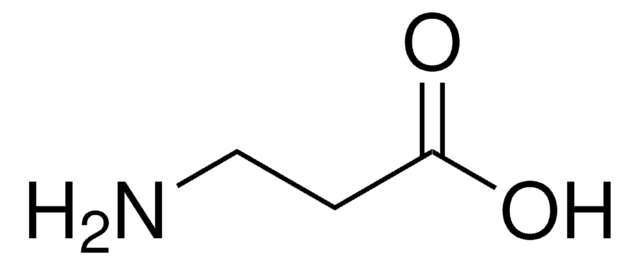G1763
β-Glutamic acid
≥98% (TLC), suitable for ligand binding assays
Sinónimos:
3-Aminopentanedioic acid
Iniciar sesiónpara Ver la Fijación de precios por contrato y de la organización
About This Item
Fórmula empírica (notación de Hill):
C5H9NO4
Número de CAS:
Peso molecular:
147.13
MDL number:
UNSPSC Code:
12352209
PubChem Substance ID:
NACRES:
NA.26
Productos recomendados
Nombre del producto
β-Glutamic acid,
assay
≥98% (TLC)
Quality Level
form
powder
technique(s)
ligand binding assay: suitable
color
white to off-white
SMILES string
NC(CC(O)=O)CC(O)=O
InChI
1S/C5H9NO4/c6-3(1-4(7)8)2-5(9)10/h3H,1-2,6H2,(H,7,8)(H,9,10)
InChI key
BBJIPMIXTXKYLZ-UHFFFAOYSA-N
Biochem/physiol Actions
β-Glutamic acid (β-Glu) is used as an osmolyte in many archaea. β-Glutamic acid may be used as a substrate to study the specificity and kinetics of archaeal and bacterial glutamine synthetase (GS) enzymes. β-Glutamic acid is used to study primitive mechanisms of polypeptide formation.
Storage Class
11 - Combustible Solids
wgk_germany
WGK 3
flash_point_f
Not applicable
flash_point_c
Not applicable
ppe
Eyeshields, Gloves, type N95 (US)
Elija entre una de las versiones más recientes:
¿Ya tiene este producto?
Encuentre la documentación para los productos que ha comprado recientemente en la Biblioteca de documentos.
Los clientes también vieron
H McLennan et al.
Neuropharmacology, 21(6), 549-554 (1982-06-01)
Separate receptors are recognized for the excitation of mammalian neurones by (a) L-glutamic and quisqualic acids and (b) N-methyl-D-aspartic (NMDA), and other amino acids which have conformationally restricted molecules. Several other compounds, both agonists and antagonists, have been examined, and
Jean-François Lambert
Origins of life and evolution of the biosphere : the journal of the International Society for the Study of the Origin of Life, 38(3), 211-242 (2008-03-18)
The present paper offers a review of recent (post-1980) work on amino acid adsorption and thermal reactivity on oxide and sulfide minerals. This review is performed in the general frame of evaluating Bernal's hypothesis of prebiotic polymerization in the adsorbed
D E Robertson et al.
Biochimica et biophysica acta, 992(3), 320-326 (1989-09-15)
13C- and 15N-NMR spectroscopy have been used to identify beta-aminoglutaric acid (beta-glutamic) as a major soluble component of the thermophilic, autotrophic marine methanogen Methanococcus thermolithotrophicus. This rare, non-protein amino acid has been recognized as a major dissolved free amino acid
P Robinson et al.
Applied and environmental microbiology, 67(10), 4458-4463 (2001-09-26)
The conversion of beta-glutamate to beta-glutamine by archaeal and bacterial glutamine synthetase (GS) enzymes has been examined. The GS from Methanohalophilus portucalensis (which was partially purified) is capable of catalyzing the amidation of this substrate with a rate sevenfold less
D E Robertson et al.
Applied and environmental microbiology, 56(5), 1504-1508 (1990-05-01)
The unusual compound beta-aminoglutaric acid (beta-glutamate) has been identified by 13C nuclear magnetic resonance spectroscopy in soluble extracts of marine methanogenic bacteria. We examined several methanogen species representing nine genera and found that beta-glutamate occurred in methanococci and two methanogenium
Chromatograms
application for HPLCNuestro equipo de científicos tiene experiencia en todas las áreas de investigación: Ciencias de la vida, Ciencia de los materiales, Síntesis química, Cromatografía, Analítica y muchas otras.
Póngase en contacto con el Servicio técnico








